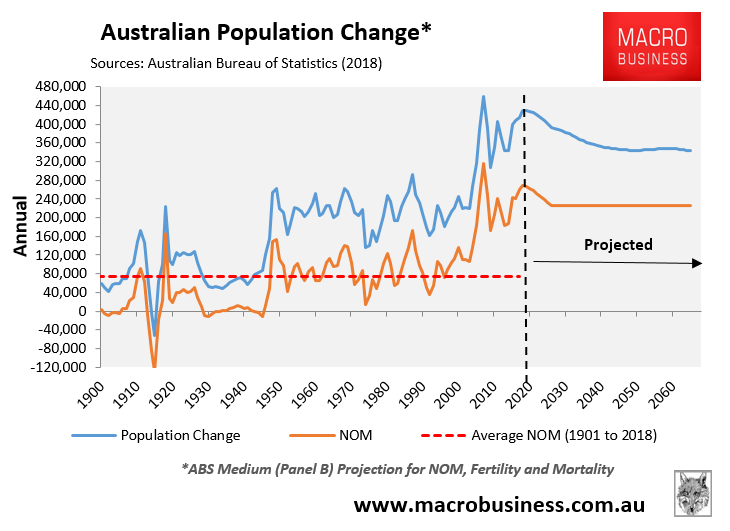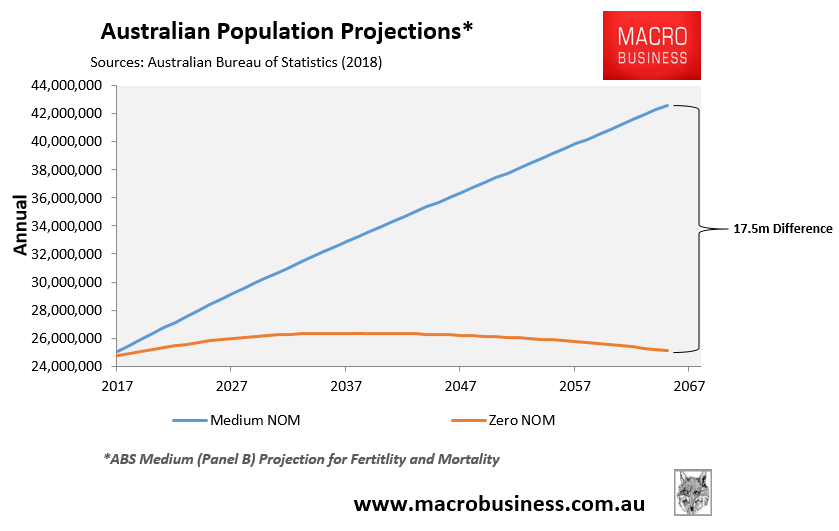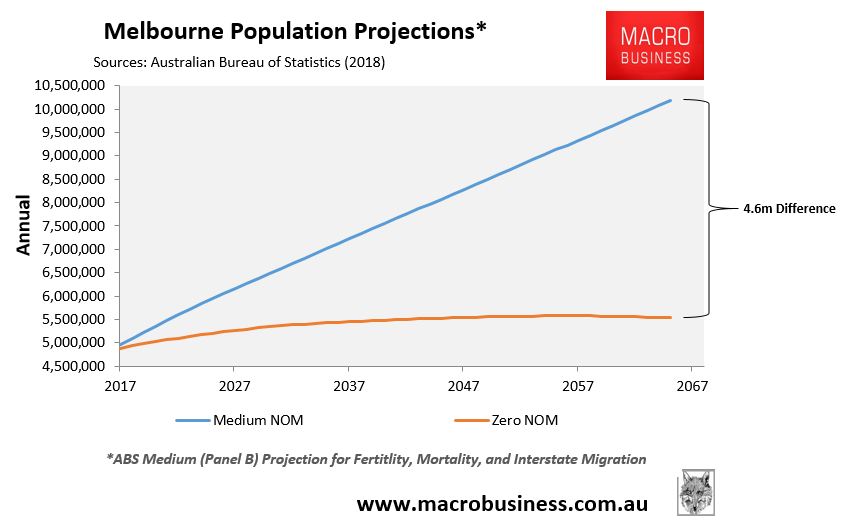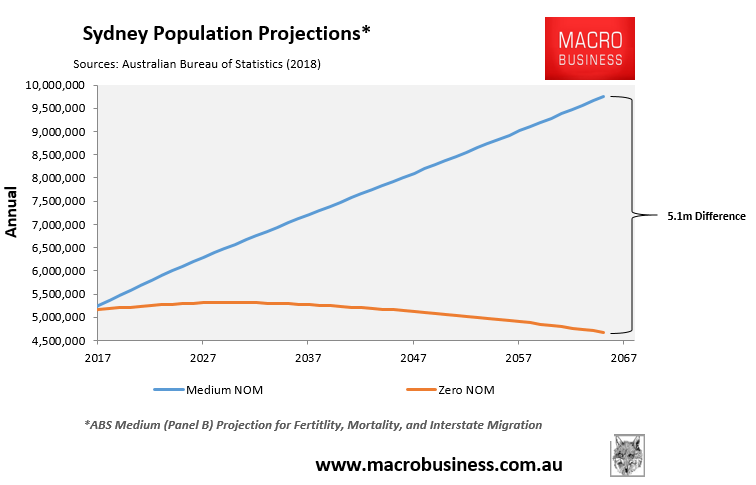Too often, commentators on the population debate understate the role played by immigration in driving Australia’s population growth.
These commentators usually claim that net overseas migration (NOM) accounts for around 60% of Australia’s population increase, whereas “natural increase” (births minus deaths) accounts for around 40%.
While this statement is true when looking at a given year, its is fundamentally wrong when examining population increase over a prolonged period.
This is because “natural increase” includes children of migrants. And if these migrants hadn’t arrived in the first place, they wouldn’t have children and later grandchildren. Hence, Australia’s population base would barely increase without NOM.
The ABS’ latest population projections were released last week. The medium (Panel B) projections from the ABS show the total population and NOM per year out to 2066. Note the huge step-up in both NOM and population growth from the historical average:

Next, Australia’s population projections are shown under medium NOM versus zero NOM, with all other variables (i.e. fertility and mortality) assumed at their medium level:

Under zero NOM, Australia’s population is projected to be 25.1 million people in 2066. This is exactly the same as Australia’s current population and 17.5 million less than with medium NOM.
What this proves is that 100% of Australia’s projected future population growth will come from immigration – both directly as migrants jump off the plane and indirectly as migrants have children and later grandchildren.
This is why the Productivity Commission’s 2016 Migrant Intake Australia Report explicitly said that “Australia’s immigration policy is its de facto population policy”. Because without positive NOM, Australia’s population would not increase.
The data for Melbourne and Sydney is equally telling. Assuming medium fertility, mortality and interstate migrant flows, Melbourne’s population would only increase by around 600,000 by 2066 and would grow by 4.5 million less people than under the ABS’ medium NOM projection:

The situation is even more stark in Sydney, where its population would actually fall by 400,000 under zero NOM (due to continued assumed losses of population interstate), and would grow by 5.1 million less than the median NOM projection:

So, in addition to showing that NOM is the sole driver of Australia’s population growth, this data also illustrates that Sydney’s and Melbourne’s infrastructure and housing problems trace back directly to the mass immigration ‘Big Australia’ policy.
What is most alarming is that over the past decade, Melbourne’s and Sydney’s populations grew by an average of 100,000 and 80,000 people a year respectively. However, over the next 48 years, Melbourne’s and Sydney’s populations are projected to grow by 109, 000 and 94,000 people per annum respectively. Therefore, population growth is projected to be even more extreme in these cities over the next 48 years, as will the associated negative impacts on liveability.
It took Australia more than 200 years to reach 17.5 million people serviced by adequate infrastructure and a functional political economy. Now we are planning to increase the population by the same number in less than 50 years and expect that living standards will keep pace, as well as the political system not break.
This is true national lunacy.

